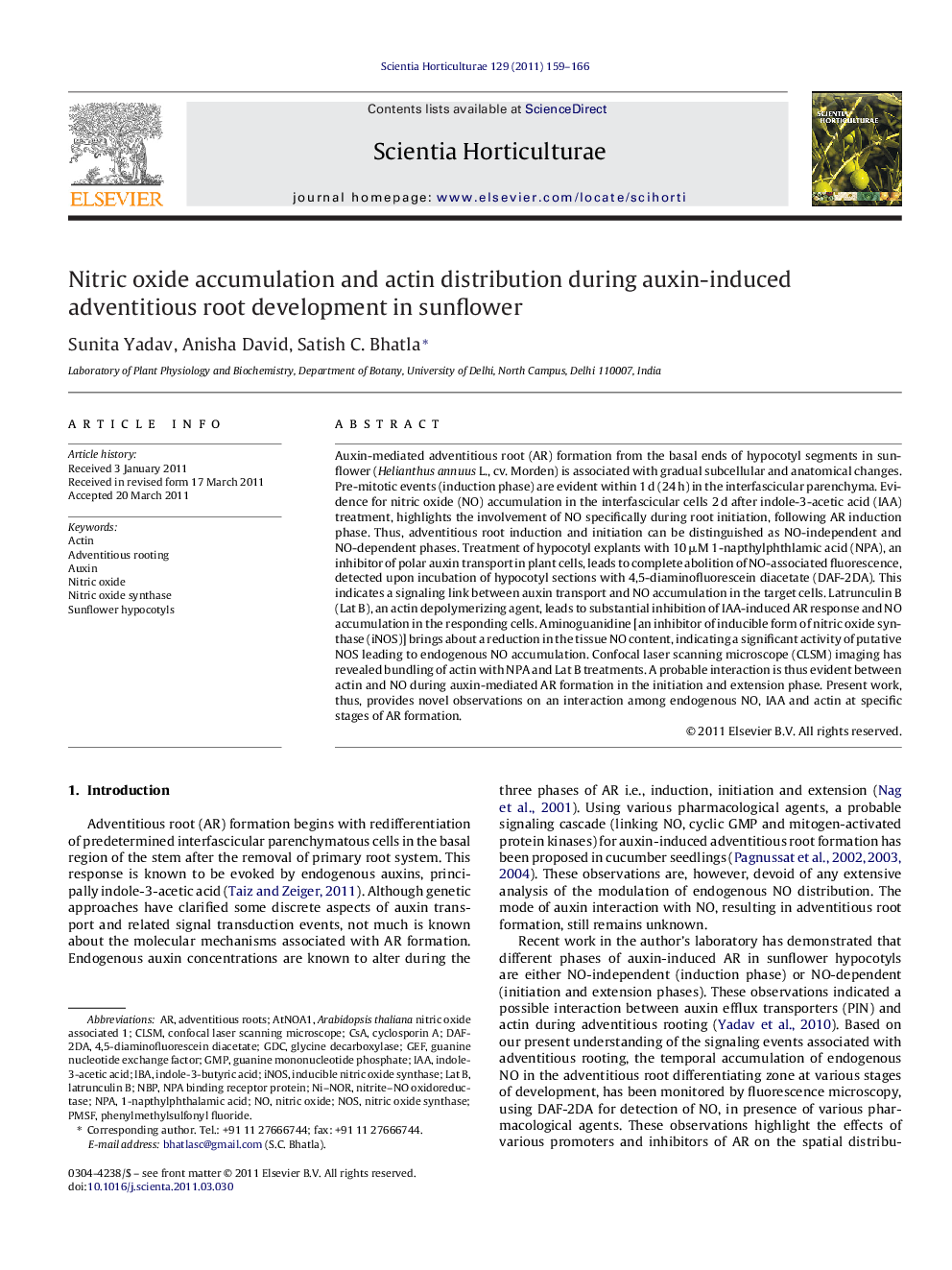| Article ID | Journal | Published Year | Pages | File Type |
|---|---|---|---|---|
| 4568079 | Scientia Horticulturae | 2011 | 8 Pages |
Auxin-mediated adventitious root (AR) formation from the basal ends of hypocotyl segments in sunflower (Helianthus annuus L., cv. Morden) is associated with gradual subcellular and anatomical changes. Pre-mitotic events (induction phase) are evident within 1 d (24 h) in the interfascicular parenchyma. Evidence for nitric oxide (NO) accumulation in the interfascicular cells 2 d after indole-3-acetic acid (IAA) treatment, highlights the involvement of NO specifically during root initiation, following AR induction phase. Thus, adventitious root induction and initiation can be distinguished as NO-independent and NO-dependent phases. Treatment of hypocotyl explants with 10 μM 1-napthylphthlamic acid (NPA), an inhibitor of polar auxin transport in plant cells, leads to complete abolition of NO-associated fluorescence, detected upon incubation of hypocotyl sections with 4,5-diaminofluorescein diacetate (DAF-2DA). This indicates a signaling link between auxin transport and NO accumulation in the target cells. Latrunculin B (Lat B), an actin depolymerizing agent, leads to substantial inhibition of IAA-induced AR response and NO accumulation in the responding cells. Aminoguanidine [an inhibitor of inducible form of nitric oxide synthase (iNOS)] brings about a reduction in the tissue NO content, indicating a significant activity of putative NOS leading to endogenous NO accumulation. Confocal laser scanning microscope (CLSM) imaging has revealed bundling of actin with NPA and Lat B treatments. A probable interaction is thus evident between actin and NO during auxin-mediated AR formation in the initiation and extension phase. Present work, thus, provides novel observations on an interaction among endogenous NO, IAA and actin at specific stages of AR formation.
► NO expression in interfascicular cells upon treatment with auxin transport inhibitors. ► Auxin, NO and actin interaction during AR formation. ► NO contribution due to putative NOS during AR formation.
